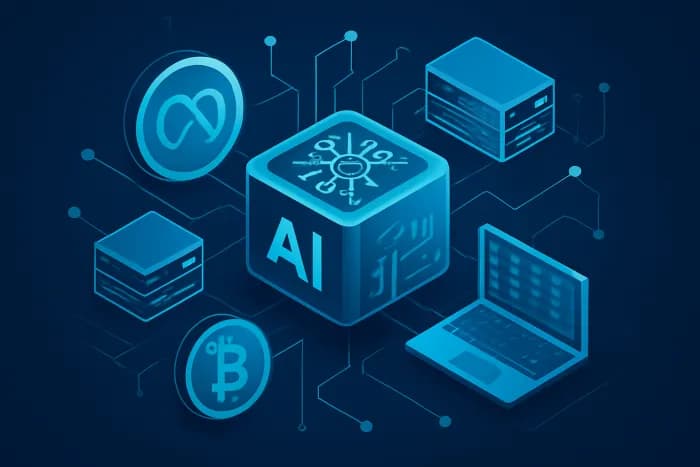NuNet (NTX) Deep Dive: Decentralized AI Compute for Web3 Builders

As AI workloads surge, centralized cloud providers face criticism over rising costs and censorship risks. NuNet emerges as a decentralized alternative, creating a peer-to-peer marketplace where idle computing resources power AI and dApp development. This deep dive examines how NuNet's architecture and tokenomics position it as a foundational layer for Web3's AI revolution.
NuNet's Architecture: Beyond Centralized Clouds
NuNet operates a decentralized P2P network that connects underutilized computing resources (GPUs/CPUs) with developers needing AI computation. Unlike centralized clouds, NuNet uses edge computing nodes distributed globally, reducing latency and bypassing single points of failure. Workloads run in isolated compute containers, while off-chain data bridges enable secure communication between decentralized applications and traditional systems. Compared to peers:
- Render Network: Focuses primarily on GPU rendering, while NuNet supports broader AI/ML workloads
- Akash: Specializes in container deployment, whereas NuNet adds AI-specific optimization layers
This architecture enables decentralized AI inference at lower costs than centralized providers, with early benchmarks showing 40-60% cost reductions for transformer model deployments[5].
NTX Tokenomics: Fueling the Compute Economy
The NuNet ecosystem is powered by the NTX token, a multi-chain utility asset with three core functions:
- Staking Mechanism: Node operators stake NTX to guarantee service uptime, with slashing penalties for unreliable providers
- Reputation System: Nodes earn reputation scores based on performance, influencing job allocation and rewards
- Fee Distribution: 70% of compute fees go to node operators, 20% to protocol treasury, and 10% to burn mechanisms
With a fixed supply of 1 billion tokens, NTX's deflationary pressure combines with staking yields projected at 8-12% APY for reputable node operators[1][5]. The token bridges Ethereum and Cardano ecosystems, enabling cross-chain settlement for compute resources.
Implementing NuNet: Developer and Node Operator Guides
For AI Developers:
- Containerize ML models using NuNet's Docker-like environment
- Define resource requirements (GPU vRAM, CPU cores) via smart contracts
- Submit jobs to the AI marketplace with NTX escrow payments
- Retrieve results through decentralized storage integrations
For Node Operators:
- Hardware Requirements: Minimum 8GB vRAM GPUs, 50Mbps bandwidth
- ROI Calculation: Mid-tier GPU nodes earn 15-25 NTX daily ($1.20-$2.00 at current prices)
- Risk Factors: Volatile NTX pricing, job allocation algorithms favoring high-reputation nodes
Roadmap and Future Outlook
NuNet's development pipeline includes:
- Confidential Computing: Enclave technology for private AI model training (Q4 2025)
- Layer-2 Settlement: Optimistic rollups for micro-payment efficiency (2026)
- Cross-Chain Expansion: Solana and Polkadot integrations
With Render Network focusing on graphics and Akash on generalized cloud, NuNet's specialized Web3 compute for AI positions it uniquely. If adoption follows projections showing 600% annual growth in decentralized AI workloads, NuNet could capture 15-20% of this market by 2027[2][5].
Conclusion: The Decentralized AWS for AI?
NuNet's combination of specialized AI infrastructure, robust tokenomics, and hardware-agnostic approach solves critical pain points in today's AI development cycle. While challenges around node standardization and cross-chain latency remain, its roadmap addresses these systematically. For Web3 builders, NuNet represents more than cost savings – it enables censorship-resistant AI development fundamentally aligned with Web3 principles. As the platform matures, its vision of becoming the decentralized AWS for AI appears increasingly attainable.